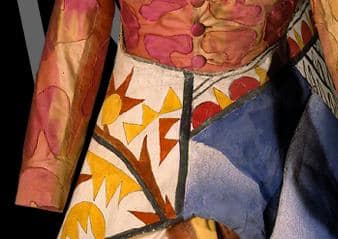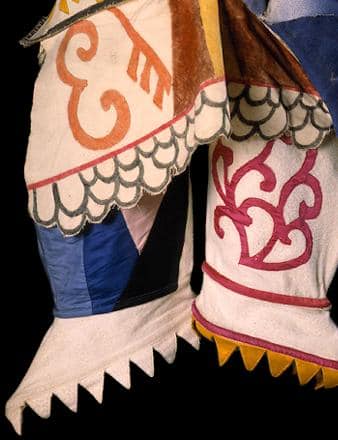




Henri Matisse, famous for his brilliantly-coloured paintings and flamboyant line designed The Song of the Nightingale for Diaghilev in 1920. His overall scheme was restrained and used black, white and yellow for dramatic emphasis. The costumes, created in multiples, became part of a fluctuating pattern of stylised shape and colour.
The Ball 1929, designed by Giorgio de Chirico, was a Surrealist fantasy featuring dancers wearing costumes embellished with architectural motifs. In Ode 1928, Pavel Tchelitchev used a cinema screen instead of painted backdrops and projected moving images behind the dancers. At the time, audiences found this 'metaphysical' ballet incomprehensible, but Tchelitchev's ideas anticipated many developments in modern theatre.

